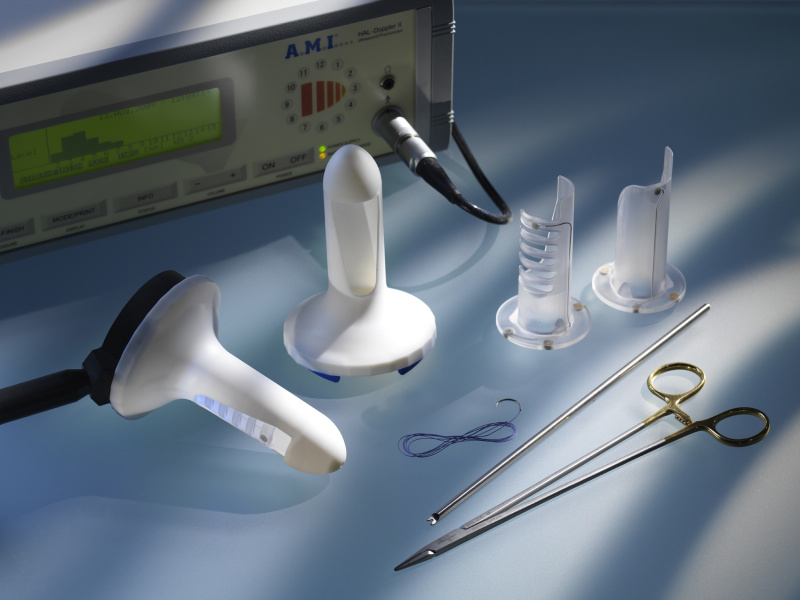DGHAL technique – Definitive treatment of hemorrhoids
Hemorrhoids are a normal part of the rectum and are made up of microscopic arteriovenous connections with a key role in controlling the output of faeces during bowel movements. However, when they show swelling or irritation, hemorrhoids appear, which can present disturbing symptoms. Symptoms of the condition include pain in the area of the anal ring, bleeding, itching and a feeling that the bowel movement is incomplete. A factor that can trigger this condition is bowel function disorders. The DGHAL technique is a highly effective treatment option for hemorrhoids.
Among the disorders of intestinal function that trigger this disturbing pathology are constipation due to insufficient intake of vegetable fiber, increased body weight, especially when accompanied by a lack of physical exercise, increased intra-abdominal pressure and advanced age. At the same time, sedentary life, standing, drinking alcohol, stress and hereditary factors increase the possibility of developing hemorrhoids.
Hemorrhoids are divided into two forms, internal and external. Internal hemorrhoids are characterized by painless bleeding from the rectum, and depending on the extent they protrude outside the rectum, they are divided into 4 grades, with the first showing no prolapse at all, while the fourth grade hemorrhoids have prolapse without the possibility of prolapse be moved back into place manually. External hemorrhoids develop under the skin around the anus, and manifest symptoms especially if a clot forms, such as pain, swelling or itching.
Diagnosing hemorrhoids requires attention, as the symptoms are very similar to other diseases of the rectal system. The clinical examination by an experienced proctologist surgeon and modern diagnostic tools offer significant facilitation in the diagnostic process of the condition. For the treatment of the condition, until recently, classical surgical techniques were widely used. However, with the introduction of new tools and surgical techniques, new methods of effective and definitive treatment of the condition have emerged, with a clearly improved postoperative course. This includes the D.G.H.A.L. technique.
The DGHAL (Doppler Guided Hemorrhoidal Artery Ligation) technique is a modern, minimally invasive technique for the treatment of hemorrhoids. It is easily, quickly and painlessly performed with the A-HAL Doppler 2 ultrasound device. The DGHAL technique. it relies on ligation of the distal branches of the superior rectal artery, resulting in a reduction in blood flow and decongestion of the hemorrhoidal plexus.
How is the DGHAL technique performed?
The procedure uses a special proctoscopic tool that has a tiny Doppler ultrasound device to locate the blood vessels that supply the hemorrhoids. The goal of the procedure is to stop the blood supply to the hemorrhoids. This is achieved by placing special sutures around each blood vessel. With the interruption of the blood supply to the hemorrhoidal veins, they atrophy and eventually shrink.
What benefits does the DGHAL method offer to the patient?
The element that distinguishes the DGHAL technique is the absence of incisions using a scalpel or laser channeling tool in the skin or in the anal mucosa area. It is indicated for the treatment of external and internal hemorrhoids of all degrees, as well as for hemorrhoids that bleed. The procedure is performed easily and painlessly in a period of 20 minutes using local anesthesia. General Surgeons in Athens apply this specific treatment method with excellent success rates. Before and after the procedure, no special care or administration of medication is required. The patient does not feel pain either during or after the procedure, while he returns to his daily activities the very next day.


